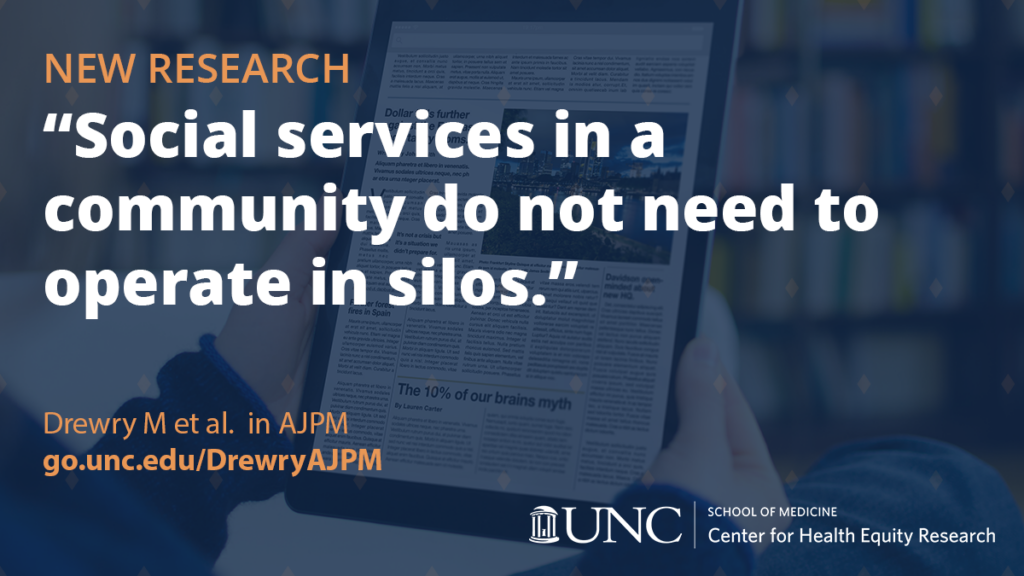
New research from CHER is shining light for researchers at every level.
New research on electronic Community Resource Referral Systems (CRRSs) is a step forward for experienced researchers and recently graduated student assistants. A systematic review explores what improves or blocks CRRS implementation and connects “structural factors” to “cultural characteristics and financial incentives in the US healthcare system.”
The study synthesizes the literature (2005 to 2020) to identify and reduce silos when they do occur. US healthcare administrators, clinicians and researchers now have a comprehensive review to guide where and how to begin implementing CRRSs. It offers “timely information” to groups designing or adopting CRRSs.
“Social services in a community do not need to operate in silos,” says Maura Drewry, lead author on the paper.
Overall, the authors found “EMR [Electronic Medical Records]-integration and automation of the referral process was reported as advantageous for stakeholders.”
Drewry says the review highlights CRRSs as an “exciting new solution to promote health equity and promote the overall health of a community.” Beyond the article findings Drewry says that “in addition to addressing social determinants of health, these systems can help identify and record the needs of the community.”
That kind of data can be crucial for informing policy, improving infrastructure and justifying funding.
The article adds to the understanding of CRRSs and calls for further research on evaluation. The authors urge future researchers to “clarify the contexts and populations in which different screening, referral, and follow-up modalities might be preferred.” They also suggest “adapt[ing] to unique local needs and preferences.”
A guiding light for student researchers
This article does more than “address [a] gap” in research on CRRSs – it shows how research processes can advance learning and knowledge for new researchers.
Drewry calls systematic reviews “a great process for working with students.” She adds, “You can read a systematic review, but it’s a whole different experience actually completing one. It gives you much better insight on what the process is.”
Sara O’Brien ’23, who worked on the paper as an undergrad, agrees with Drewry on the value of working on systematic reviews for students.
“I was thinking about how helpful doing a systematic review really is for someone who’s newer to research.” She adds, “I wish it was more accessible [to undergraduates]. I just learned so much better about how to digest an article, and I think that’s one really valuable aspect of it for newer researchers especially.”
Drewry says that co-authoring a published paper is an “exciting opportunity” for students and emphasizes the mentorship it offers.
“For an undergrad, being part of those discussions with senior researchers can be a great way to learn…how to read a journal article and see the nuances that are important for understanding what the data really means.”
The value of systematic reviews is underlined by the effort involved in producing them. Drewry and O’Brien reflect on the challenges of this type of research.
Drewry says, “For this type of paper you have to be very, very organized.” And, she adds, you need consistent documentation.
O’Brien mentions the need for clarity: “You have to be clear about what you’re trying to get.”
Both authors, though, agree that the benefits of systematic reviews outweigh challenges. O’Brien’s big takeaway: it’s all about balance.
“It’s cutting edge science you’re trying to synthesize – you have to balance between getting the information out there and recognizing that systematic reviews can take a long time.”
In the CRRS paper, the outcome and the process are advancing health equity research.
The paper, “A Systematic Review of Electronic Community Resource Referral Systems,” is published in the American Journal of Preventive Medicine.
READ THE STUDY